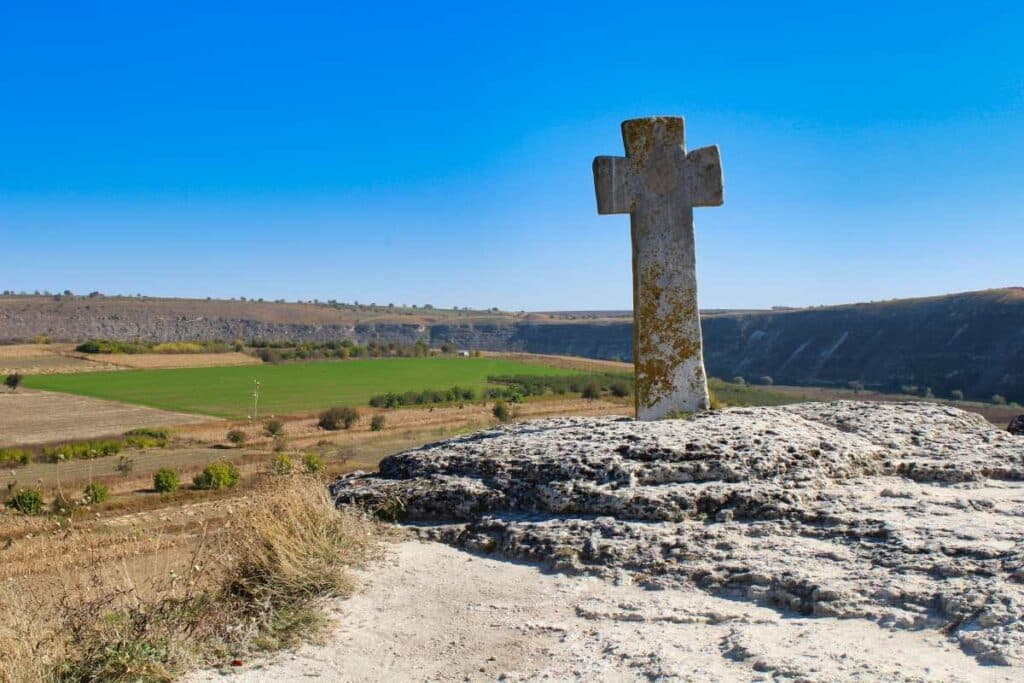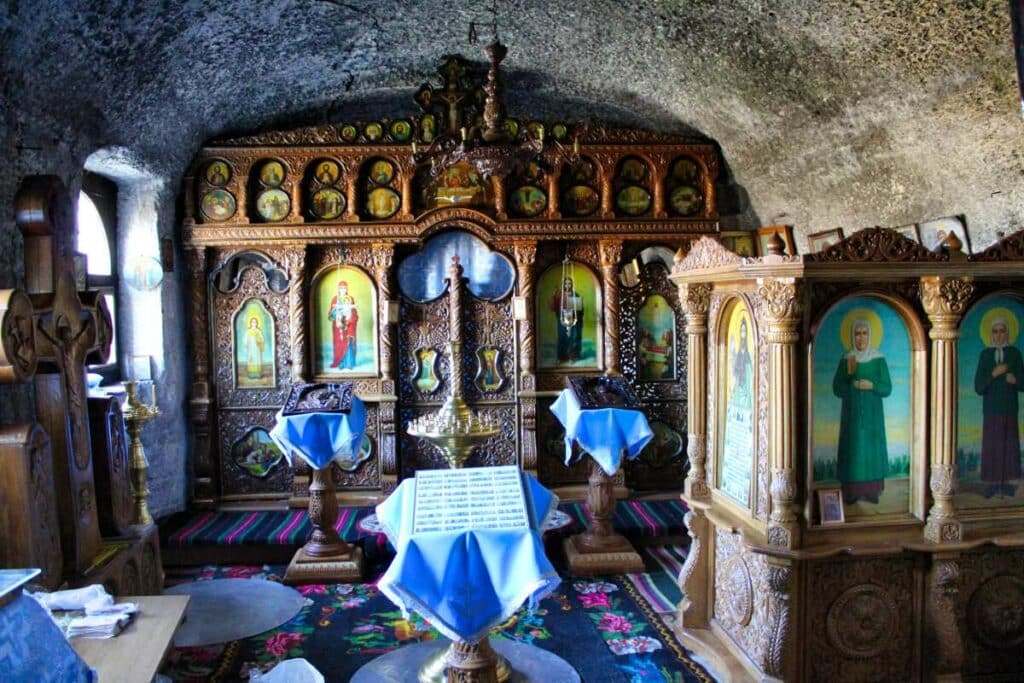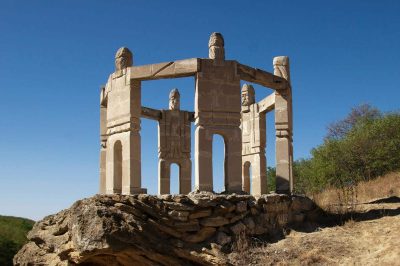The Republic of Moldova between Romania and Ukraine is one of the “white spots” on the map in terms of tourism for many people. And indeed, the first things that come to mind when you think of Moldova are not necessarily positive; most people probably think of poverty and the part of the country controlled by pro-Russian separatists, Transnistria.
But in this article, I want to show you that Moldova is a fascinating multi-ethnic state in miniature with numerous exciting sights, a legendary wine culture and many surprises, for which I visited the most beautiful Moldovan sights. Click here to read an article by our guest author Professor Haversath on the history of the country.

Bulevardul Ștefan cel Mare și Sfînt in Chișinău
A good one in five inhabitants of Moldova lives in the capital Chișinău, the intellectual and economic center of the country. One of the most striking and emblematic places in the city is the Bulevardul Ștefan cel Mare și Sfînt, also known as Stefan the Great Boulevard. It was built in the 19th century and has been redesigned and extended several times over the years. Today, it is not only an important thoroughfare, but also the cultural and social hub of the city, and indeed the entire country.

The Bulevardul Ștefan cel Mare și Sfînt is lined with magnificent buildings that display a mixture of different architectural styles. Impressive examples of neoclassical, Soviet and modern architecture can be found here. Some of the most notable buildings along the boulevard are the National Opera and Ballet House, the National Art Museum, the Government Building of the Republic of Moldova and the Presidential Palace. Opposite the government building you will find the Arcul de Triumf (Triumphal Arch), which commemorates the Russian victory in the Russo-Turkish War of 1828/1829.

Cathedral of the Nativity of the Lord in Chișinău
But perhaps the most impressive building on Bulevardul Ștefan cel Mare și Sfînt is the Catedrala Mitropolitană Nașterea Domnului (“Birth of the Lord”). The history of this cathedral dates back to the 19th century. The cathedral was built in Empire style, during the Soviet period the building served various purposes. In 1992, after Moldova’s independence, the cathedral was returned to the Moldavian Orthodox Church and lavishly restored to its former splendor and spiritual significance. Inside the cathedral are impressive icons, murals and a stunning iconostasis. The importance of the church for the country is also shown by the fact that in 1939 the first radio station in the city broadcast a mass here.

Monastery of the Great Martyr Teodor Tiron in Chișinău
The monastery of the great martyr Teodor Tiron, usually referred to simply as the Ciuflea Monastery, is almost more visually impressive than the cathedral on Bulevardul Ștefan cel Mare și Sfînt. The monastery has a long and impressive history dating back to the 19th century. This Moldovan attraction also has a special place in the hearts of the inhabitants of Chișinău, as the monastery church was the only one in the city where church services were held for a long time during the Soviet era. With its sky-blue façade and golden towers and domes, the church is an absolute eye-catcher, but you should also definitely visit the interior, where several relics are kept!


Socialist architecture in Chișinău
Most of the city’s residents roll their eyes (or turn their heads away) at the sight of the many supposed “architectural sins” from the period between 1960 and 1990. But for those interested in socialist modernism or lost places, Chișinău is almost a Mecca. The parliament building pictured above is still in use, but other buildings are slowly falling into disrepair and the country’s economic problems can be felt everywhere. However, fans of unusual photo spots will really enjoy the city. I particularly liked the state circus (left in the picture) from 1981 and the former Intourist Hotel Național. By the way, you can find an interactive map with the most beautiful places of Socialist Modernism here.

Orheiul Vechi
Only about an hour’s drive from Chișinău lays one of the country’s greatest natural beauties (and also, for many, the country’s most significant sight). The historical cave monasteries and archaeological sites hidden in this enchanting landscape make Orheiul Vechi a true jewel that combines both history and nature experience.

People have lived here since the Stone Age, and the cave monasteries were added in the 17th century on Butuceni Hill. Even today, hermits still live in the caves here, from where you have a fabulous view of the Răut river valley. The remains of the Tatar fortress Shehr al-Jadid and a mosque can also be found here. The village of Butuceni has numerous historic farmhouses, which is also where I took the cover photo for this article.

Cricova wine collection
Wine growing has a history in Moldova dating back to about 3000 BC. No wonder, since the country lies on the same latitude as the French Burgundy. In Soviet times, therefore, the wine from Moldova enjoyed a similar reputation as the Georgian, popular was and is also the cognac. Two special places in Moldova have now become points of attraction for international wine lovers.
120 km long is the tunnel system under the small town of Cricova, in the past limestone was mined here. Since the climatic conditions here, which remain constant all year round, are ideal, over 1.2 million (!) bottles of wine are now stored here. Sparkling wine is also produced here, but above all the many guests are curious to know which wines Hermann Göring (part of his wine collection is actually still here) or the Russian dictator Vladimir Putin stored here.


Mileștii Mici
You can already see it on the picture above right, Mileștii Mici at the gates of Chișinău is a special, even record-breaking place. In fact, with 1.5 million bottles, more wines are stored here than in Cricova, making it the largest wine cellar in the world. The underground labyrinth of galleries is 250 km long, although only about one fifth of the area is used at all. As a visitor you can ride your bike through the dark cellars and taste the excellent wines, the way back was a bit adventurous in my case.

Gagauzia
Probably only ethnology students among our readers have heard of the Gagauz. They are a Turkic people of Orthodox faith with their own language. The region around the capital Comrat enjoys some freedom and autonomy in Moldova. UNESCO classifies Gagauz as an endangered language, partly because many young Gagauz speak Russian in everyday life. A visit to the very rural region of Gagauzia is worthwhile not so much because there would be many Moldova sights here, but mainly because of the hospitality and friendliness of the people, who proudly maintain their traditions.

Bender Fortress – Munchausen’s Flight
To get to Bender Fortress and Tiraspol, you have to overcome a few hurdles, as both places are located in the breakaway republic of Transnistria, a Russian puppet state (where there is no shortage of flags, as you can see in the picture above). If you want to travel to the self-proclaimed, internationally unrecognized “Pridnestrovian Moldavian Republic”, you will not receive consular assistance, so you are taking a certain risk, especially in times of the Russian war of aggression against Ukraine.

However, if you dare to make the trip, you will come to Bender just after the Russian military checkpoint. The most important sight in the town is its 16th century fortress, which was built by Ștefan cel Mare and conquered by the Ottomans shortly afterwards. The place is of historical significance as the great Cossack leader Ivan Masepa died here in 1709. However, the fortress is probably better known for Baron von Münchhausen, who is said to have flown from here to Crimea on a cannonball. Today you can find several historical exhibitions here.

Tiraspol
Tiraspol is the capital of the unrecognized republic of Transnistria and in many ways a stark contrast to Chișinău. One rubs one’s eyes while walking through the city, on the one hand because everything here is spotlessly clean (which is not necessarily true for the Moldovan capital), on the other hand because everything seems to have fallen out of time. One would certainly be doing Tiraspol an injustice if one were to call it a “Soviet Disneyland”, but those who are too young and have never been to the Soviet Union will get an idea here of what it might have been like back then.

You’ll find statues of Lenin everywhere, you can buy Stalin fridge magnets at kiosks and everything else seems a bit bizarre. But that’s exactly why it’s worth a visit. Incidentally, you can pay in Transnistrian roubles, which (as the only “country” in the world) are even available in plastic! You have to get involved with Tiraspol, but the people here are also incredibly hospitable, which makes this place one of the most exciting Moldova sights.
Book Tips Moldova Sightseeing
You wanted to travel to the Republic of Moldova and visit the many Moldovan sights? Then these book tips are just right for you!
- Frieder Monzer (Author)
The standard travel book for Moldova is almost a must-read for anyone who wants to travel to the country. Well-founded, well-researched and sometimes amusing, it presents the most important Moldovan sights and tells you a lot about the country and its people.
- Wolfgang Orians (Author)
This book is also suitable for travel preparation, even if it is a bit outdated.
How did you like our article about the sights of Moldova? Have you ever been to this small, unknown country? Let us know and write us a comment!



